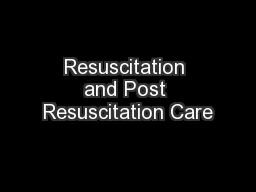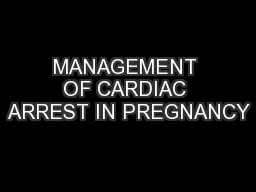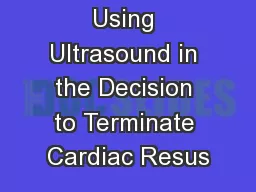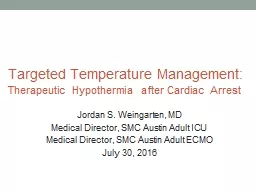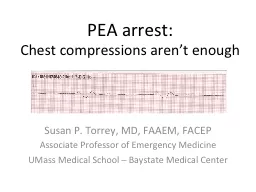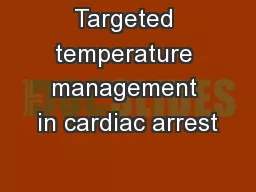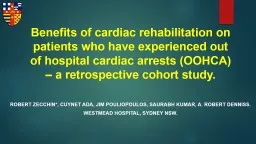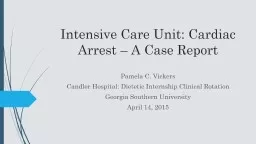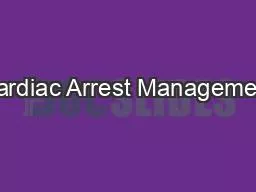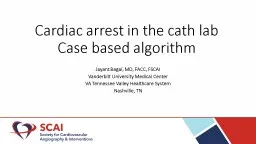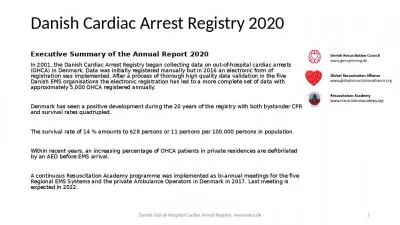PDF-Cardiac Arrest
Author : candy | Published Date : 2021-10-07
An Important Public Health IssueCardiac arrest is a public health issue with widespread incidence andsevere impact on human health and wellbeing There are severalrecommended
Presentation Embed Code
Download Presentation
Download Presentation The PPT/PDF document "Cardiac Arrest" is the property of its rightful owner. Permission is granted to download and print the materials on this website for personal, non-commercial use only, and to display it on your personal computer provided you do not modify the materials and that you retain all copyright notices contained in the materials. By downloading content from our website, you accept the terms of this agreement.
Cardiac Arrest: Transcript
Download Rules Of Document
"Cardiac Arrest"The content belongs to its owner. You may download and print it for personal use, without modification, and keep all copyright notices. By downloading, you agree to these terms.
Related Documents



